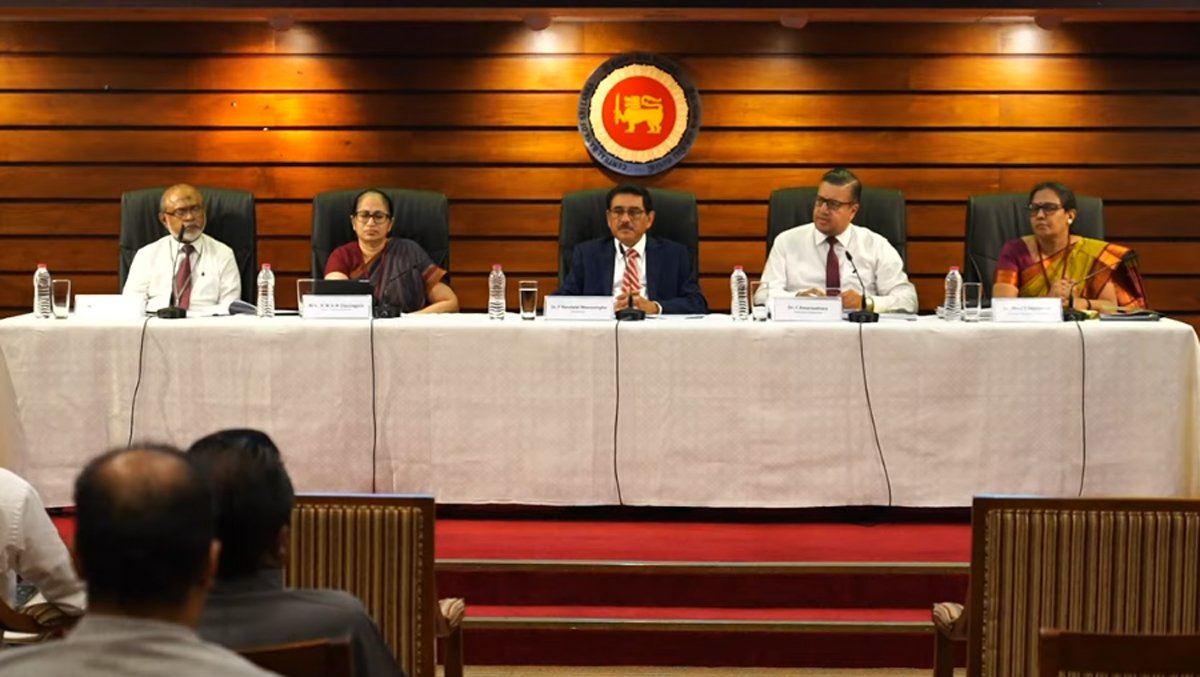
ECONOMYNEXT – Fitch Ratings said it was confirming an A-(lka) rating on Sri Lanka’s Nations Trust Bank Plc (NTB) with a Stable outlook, amid an improvement in operating environment, indicated by headline macroeconomic indicators.
NTB’s risk profile remains exposed to the defaulted foreign currency-denominated sovereign bonds (1.8% of assets at end-2023), alongside a further 34.7% of assets in local-currency-denominated government securities, the rating agency said.
“We expect the envisaged loan-book growth to support NTB’s impaired (stage 3) loans ratio improvement over the medium term alongside economic stabilisation, but risks to asset quality are likely as new loans season,” Fitch said.
The full statement is reproduced below:
Fitch Affirms Nations Trust Bank at ‘A-(lka)’; Outlook Stable
Fitch Ratings – Colombo – 22 Jul 2024: Fitch Ratings has affirmed the National LongTerm Rating of Nations Trust Bank PLC (NTB) at ‘A-(lka)’. The Outlook is Stable. Fitch has also affirmed NTB’s Sri Lankan rupee-denominated outstanding subordinated debt at ‘BBB(lka)’.
KEY RATING DRIVERS
Intrinsic Profile Drives Rating: NTB’s National Long-Term Rating reflects its own financial strength, which is highly influenced by exposure to the sovereign’s weak credit profile (Long-Term Foreign-Currency Issuer Default Rating (IDR): RD; Long-Term Local-Currency IDR: CCC-) and the ongoing sovereign debt restructuring which had been putting pressure on NTB’s credit profile. The rating also reflects the bank’s modest domestic franchise as Sri Lanka’s ninth-largest commercial bank.
Stabilising OE: Sri Lankan banks’ operating environment (OE) continues to show signs of stabilisation, as evident in sustained improvements in reported headline macroeconomic indicators, supporting the recovery in banks’ operational flexibility.
Further improvement to the banks’ OE remains contingent on successful execution of the sovereign’s external debt-restructuring exercise alongside the restoration of the sovereign’s creditworthiness, given the strong link between sovereign financial health and banks’ operating conditions.
Economy Supports Business Profile: We expect the stabilising economic conditions to support NTB’s ability to generate and defend business volumes despite constraints from an operating environment which is still weak. NTB’s net loans in total assets increased to 54.3% in 1Q24 from 52.5% in 2023, reversing a contracting trend, albeit reflecting lending opportunities which are still limited. The bank’s security investments and cash balances remained elevated at 43.2% at end-1Q24 (2023: 44.8%) from pre-crisis levels of 30%-33%.
Sovereign Risks Persist: NTB’s risk profile remains exposed to the defaulted foreign currency-denominated sovereign bonds (1.8% of assets at end-2023), alongside a further 34.7% of assets in local-currency-denominated government securities, making the bank vulnerable to the sovereign’s repayment capacity and liquidity.
The risk profile also reflects the bank’s planned rapid loan growth strategy in the near- to medium-term which
could exert pressure on its underwriting standards.
Asset-Quality Risks Contained: We expect the envisaged loan-book growth to support NTB’s impaired (stage 3) loans ratio improvement over the medium term alongside economic stabilisation, but risks to asset quality are likely as new loans season. NTB’s impaired-loans ratio stood at 7.4% at end-2023 (2022: 7.5%), better than the sector’s 12.8% (2022: 11.6%) thanks to the 12.2% loan-growth in contrast to a sector-wide contraction, write-offs and recoveries. Large exposure to the weakened sovereign credit profile through its security holdings also exerts pressure on asset quality.
Profitability to Normalise: NTB’s core profitability metric – operating profit/risk weighted asset ratio – improved to 9.8% in 1Q24, above the peer average of 4.3%. We expect this to slip through 2024 and further in 2025 as treasury investment portfolio returns wane alongside the increase in risk-weighted assets through predominantly corporate-driven loan growth – a low-margin segment, thereby leading to normalised core profitability (pre-crisis 4-year average of 3.8%).
Capital Buffers to Narrow: We expect NTB’s improved CET 1 ratio of 17.3% by end1Q24 (2022: 14.8%) to moderate due to rising risk density alongside lending. The bank currently benefits from large investments in zero-risk-weighted government securities, which we expect to shift into capital-consuming risky assets. Moreover, the bank’s large positions in Fair Value through Other Comprehensive Income/Available for Sale (16.4% of assets in 1Q24) expose its capital buffers to interest-rate swings.
Funding and Liquidity Risks Ease: We believe the favourable external sector flows and the bank’s focus on liquidity preservation have subsided stresses on funding and liquidity and reduced the risk of bank failure. However, NTB’s funding and liquidity profile – particularly in foreign currency – remains susceptible to sudden changes in creditor sentiment driven by adverse changes to sovereign’s credit profile, similar to peers.
RATING SENSITIVITIES
Factors that Could, Individually or Collectively, Lead to Negative Rating Action/Downgrade
The bank’s National Rating is sensitive to a change in its creditworthiness relative to other Sri Lankan issuers.
A deterioration in NTB’s key credit metrics beyond our base-case expectations relative to peers would also lead to increased pressure on the rating, which is driven by its intrinsic financial strength.
Factors that Could, Individually or Collectively, Lead to Positive Rating Action/Upgrade
Positive rating action on the sovereign may lead to an upgrade in the bank’s rating. A sustained improvement in the bank’s key credit metrics beyond our base-case expectations relative to peers, could also lead to an upgrade.
OTHER DEBT AND ISSUER RATINGS: KEY RATING DRIVERS SUBORDINATED DEBT
NTB’s rupee-denominated subordinated debt is rated two notches below the National Long-Term Rating anchor. This reflects Fitch’s baseline notching for loss severity for this type of debt, and our expectations of poor recoveries. There is no additional notching for non-performance risks, as the notes do not incorporate going-concern loss-absorption features.
OTHER DEBT AND ISSUER RATINGS: RATING SENSITIVITIES
The subordinated debt rating will move in tandem with the bank’s National Long-Term Rating.
REFERENCES FOR SUBSTANTIALLY MATERIAL SOURCE CITED AS KEY DRIVER OF RATING
The principal sources of information used in the analysis are described in the Applicable Criteria.
Additional information is available on www.fitchratings.com (Colombo/Jul24/2024)
